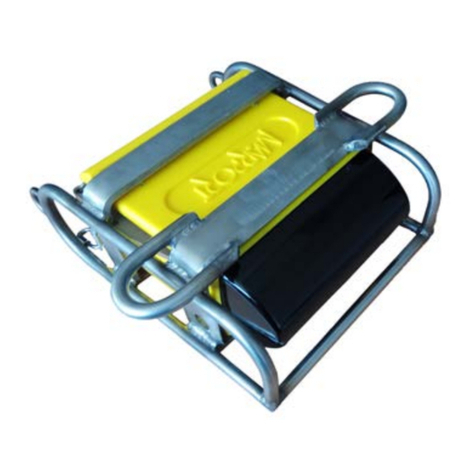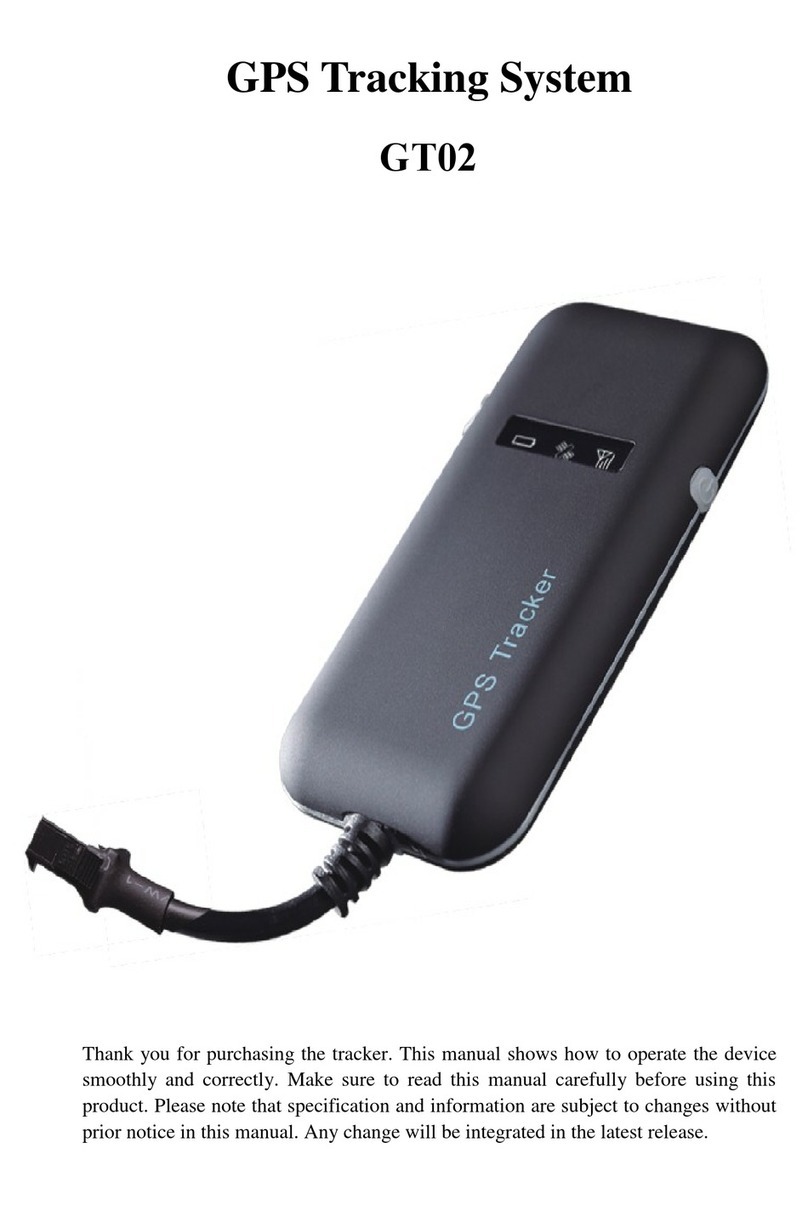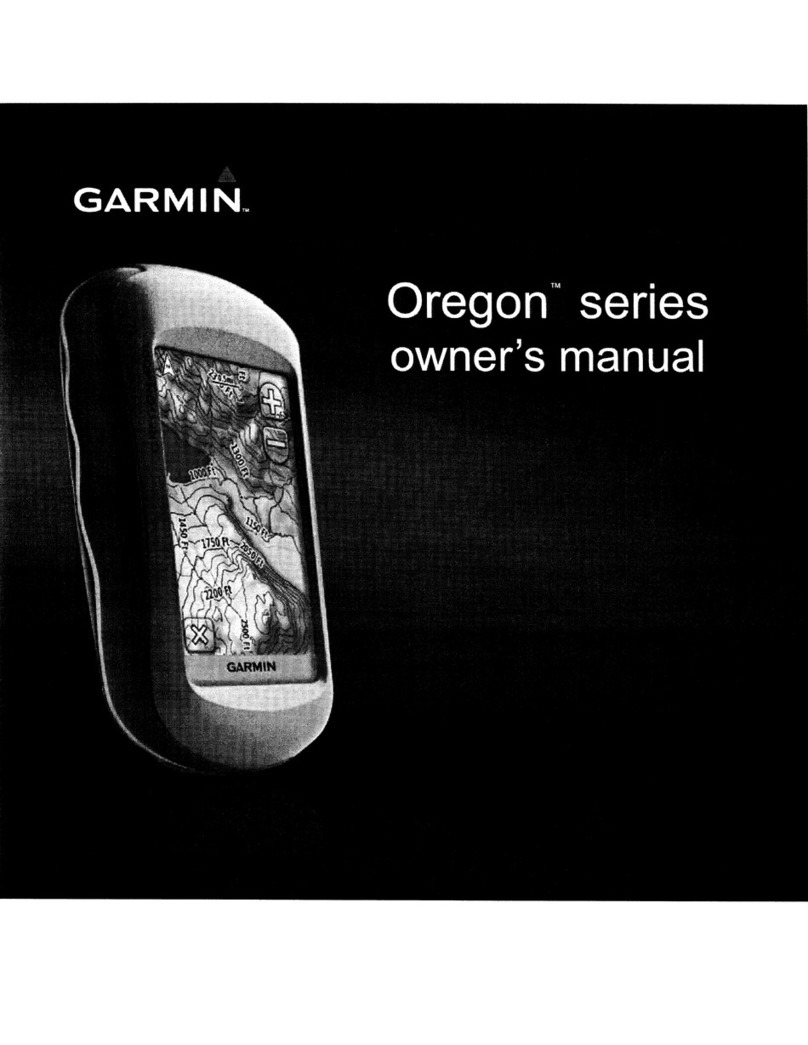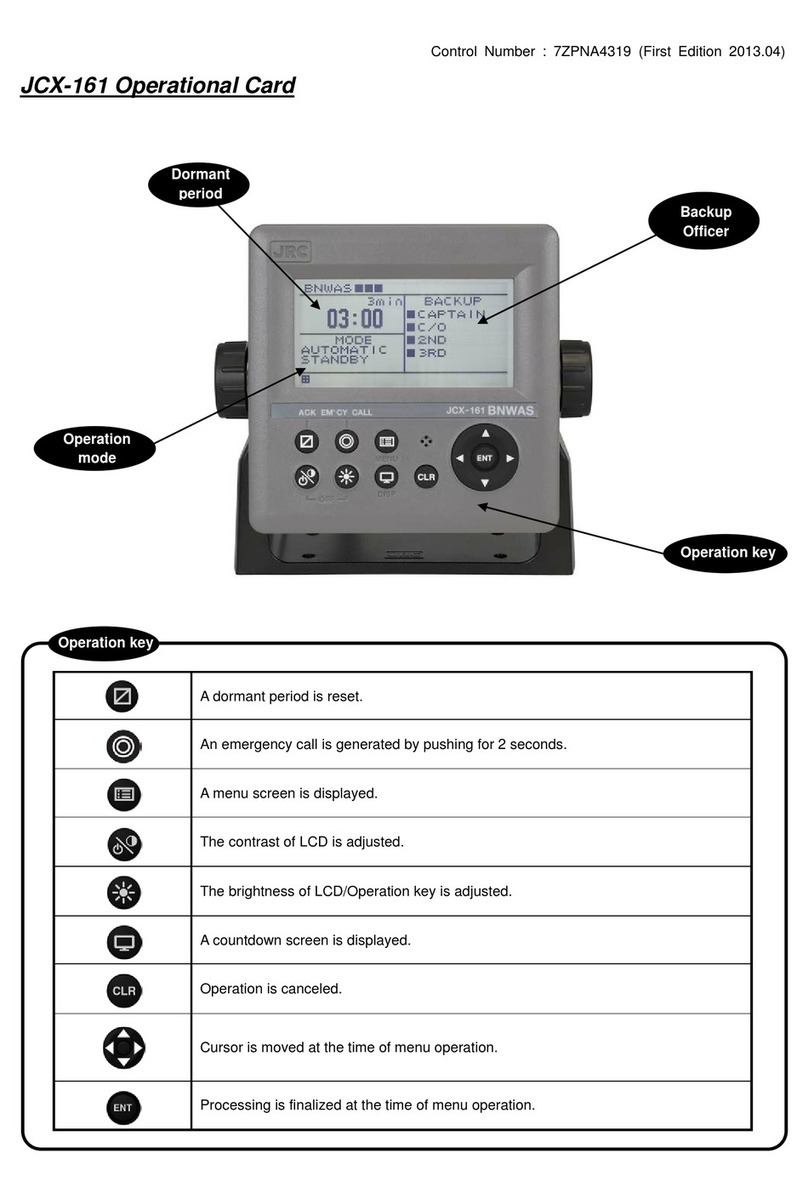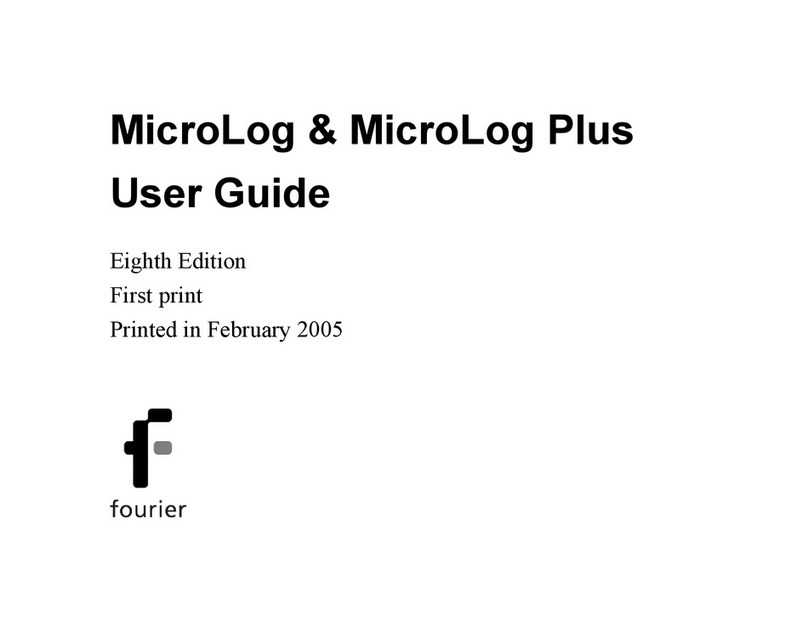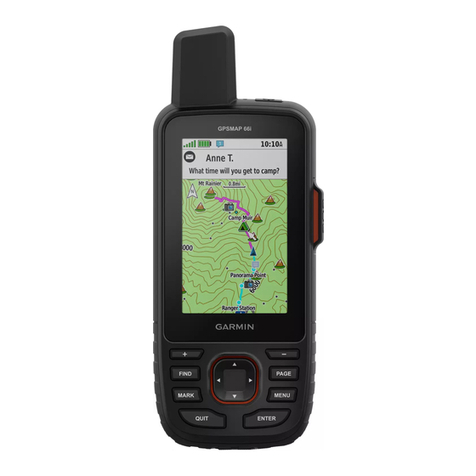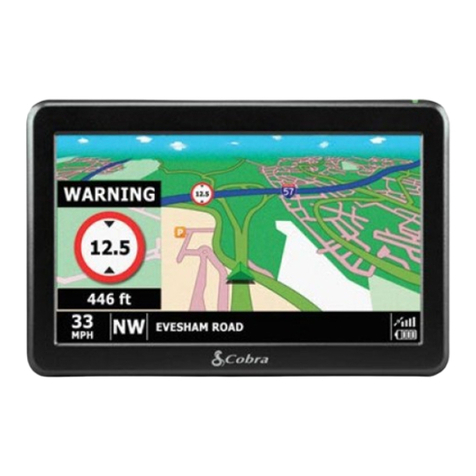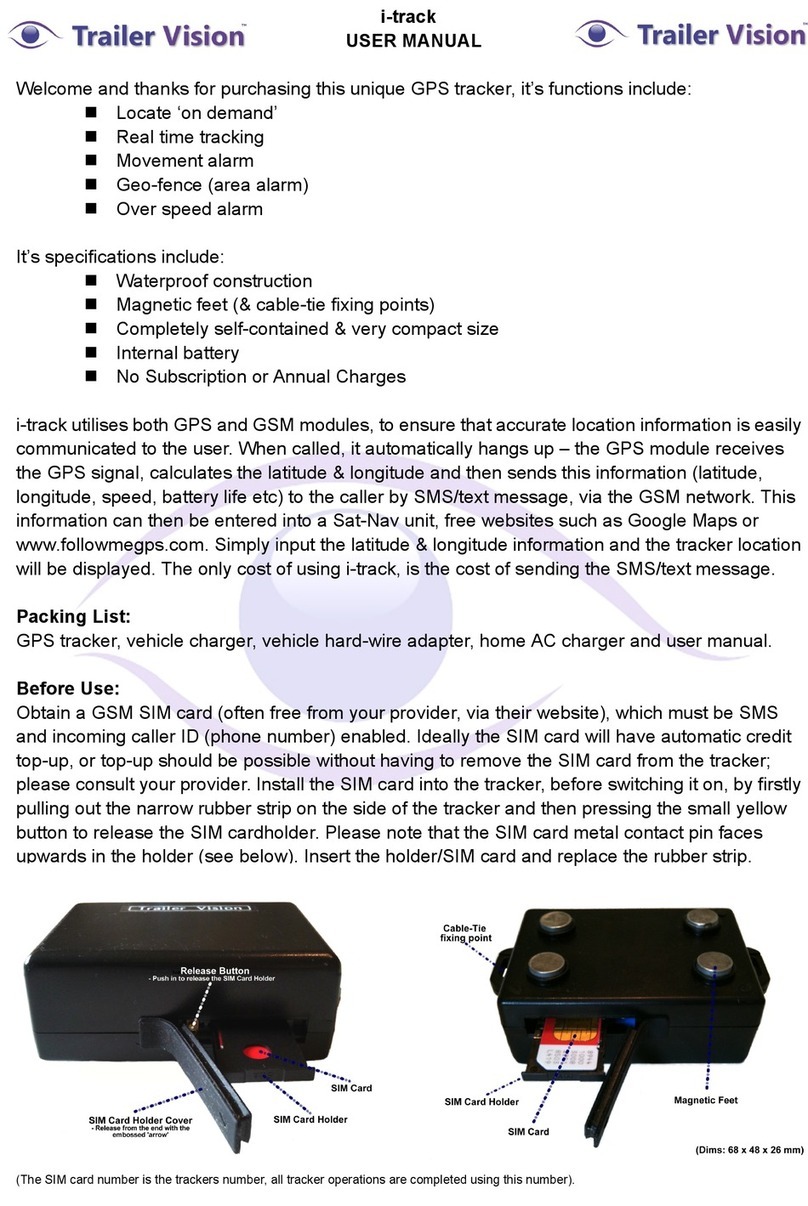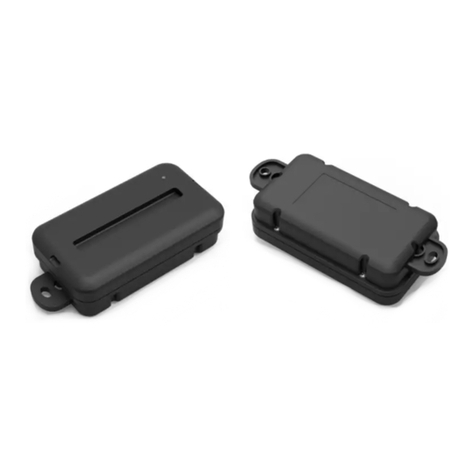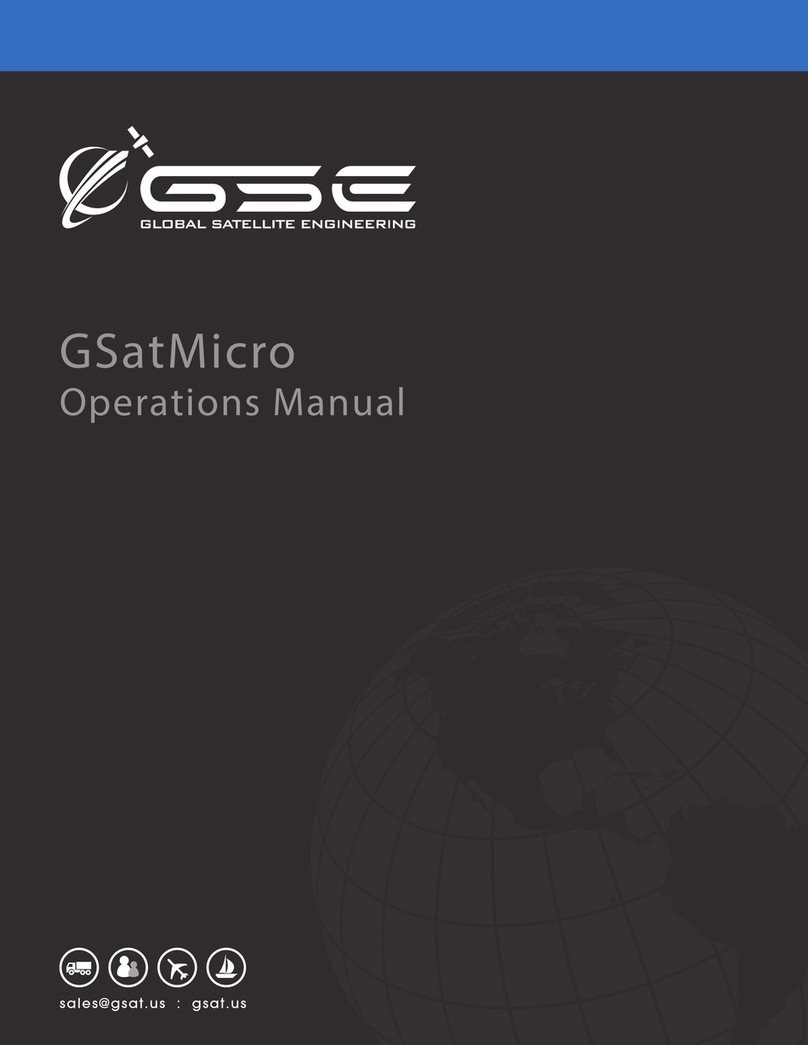SEPTENTRIO Altus APS3G User manual

Po
User Manual
Altus APS3G

2
Altus APS3G User Manual
Revision 1.1
Applicable to version 4.3.3 of the Altus APS3G Firmware
January 05, 2018
© Copyright 2000-2017 Septentrio NV/SA. All rights reserved.
Septentrio and the Septentrio logo are trademarks of Septentrio NV registered in Belgium, the
U.S. and other countries. No part of this document may be copied, used or reproduced without
the prior written permission of Septentrio NV.
No part of this manual me by reproduced or transmitted in any form or by any means, electronic
or mechanical, including photocopying and recording, or any purpose without the express
written permission of Septentrio NV.
Mention of third-party products in this document is for informational purposes only and does not
constitute an endorsement or a recommendation. Septentrio NV assumes no responsibility with
regard to the performance or use of the Altus APS3G due to GNSS characteristics, USA
Department of Defense operations control, atmospheric effects, multipath and RF interference.
All understandings, agreements, or warranties take place directly between the seller and the
prospective users. Every effort has been made to ensure that the information in this manual is
accurate. Septentrio NV is not responsible for printing or clerical errors. All specifications are
typical and subject to change without prior notice.
Septentrio
Greenhill Campus, Interleuvenlaan 15i
B-3001 Leuven, Belgium
http://www.septentrio.com
Phone: +32 16 300 800
Fax: +32 16 221 640
@Septentrio

3
Table of Contents
1. Introduction ........................................................................ 4
1.1. Foreword .....................................................................................................4
1.2. User Notices.................................................................................................4
1.3. Support .......................................................................................................6
2. Altus APS3G overview.......................................................... 7
2.1. Altus APS3G product versions........................................................................7
2.2. Altus APS3G features....................................................................................8
3. Altus APS3G device and specifications................................. 20
3.1. Internal UHF radio...................................................................................... 20
3.2. Cell modem................................................................................................ 21
3.3. Batteries and charger ................................................................................. 24
3.4. GNSS antenna offset .................................................................................. 26
4. Data collection software..................................................... 28
4.1. PinPoint-GIS App........................................................................................ 28
5. APS3G Tools ..................................................................... 28
6. Connecting to Altus APS3G with RxControl .......................... 30
7. PPP positioning with the Altus APS3G ................................. 30
8. Upgrading the firmware ..................................................... 37
8.1. Upgrading the firmware using the SD card................................................... 37
8.2. Altus APS3G default configuration upload..................................................... 39
8.3. Verifying the firmware upgrade ................................................................... 40
8.4. Disconnect the serial cable.......................................................................... 40
9. Frequently Asked Questions ............................................... 41
10. Altus APS3G block diagram ......................................... 44
11. Radio compatibility and performance........................... 45

4
1. Introduction
1.1. Foreword
The Altus APS3G is a high-precision GNSS receiver with integrated state-of-the-art wireless
communications specifically designed for surveying applications. This Altus APS3G User Manual
contains reference information to assist you with using your new receiver.
1.2. User Notices
This section provides information regarding FCC, CE, Warranty and Customer Service with
Support. All specifications are subject to change without prior notice. Septentrio reserves the
right to make improvements and changes to this document, products and services without
notice or obligation.
1.2.1. FCC
The Altus APS3G complies with Part 47 of the FCC rules. The standard is designed to provide
protection against harmful interference when operated in a commercial environment. This
device will receive and transmit radio frequency signals which may cause interference to radio
communications unless operated as specified according to this User Manual.
1.2.2. CE Mark
The Altus APS3G carries the CE mark indicating compliance with the Electromagnetic
Compatibility (EMC) directive and the Low Voltage Directive (LVD) of the European Union (EU).

5
1.2.3. Warranty
Septentrio provides a two-year warranty for the Altus APS3G receiver, free from defects in
materials and workmanship, from the date of sale on the invoice of the original buyer. A ninety-
day warranty is provided for the cables and other accessories. Firmware upgrades are free for
lifetime of the product.
The warranty does not cover:
•Defects due to accidents, abuse, misuse, negligence, abnormal use or any other non-
recommended use
•Defects due to environmental conditions that do not conform to Altus APS3G
specifications
•Defects due to improper installation or operating procedures
•Defects due to modifications, alterations, or changes not made in accordance with the
Altus APS3G User Manual and other technical documentation or directly authorized by
Septentrio
•Normal wear and tear
•Shipping damage
•Third party software included with the product, other than the warranty of the original
manufacturer to the extent the manufacturer permits
Please note that tampering with or opening the Altus APS3G will invalidate the warranty

6
1.3. Support
For first-line support, please contact your Septentrio dealer. Further information, documentation
and the latest firmware can be found on the Septentrio support website. For all other problems,
please contact our Technical Support group:
http://www.septentrio.com
Europe
Septentrio NV Phone: +32 16 300 800
Greenhill Campus Fax: +32 16 221 640
Interleuvenlaan 15i, sales@septentrio.com
3001 Leuven,
Belgium
North and South America
Septentrio Inc. Phone: +1 310 541 8139
Suite 200, sales@septentrio.com
23848 Hawthorne Blvd.
Torrance, CA 90505
USA
Asia-Pacifc
Septentrio Phone: +852 3959 8680
Unit 1901, Hua Fu Bldg. sales@septentrio.com
111 Queen’s Road West,
Shueng Wan,
Hong Kong

7
2. Altus APS3G overview
2.1. Altus APS3G product versions
The Septentrio Altus APS3G product family is the successor of the APS-3 and APS-3G product
family (previously branded Altus), reusing the solid mechanics and accessories, while offering
next-generation performance.
Altus is no longer a brand name, it is now a product family name for the GIS and survey
products of the Septentrio brand.
Compared to the APS-3 family of products the Altus APS3G brings the following improvements:
Altus APS3G brings:
12 to 14 hours of autonomy on two batteries
Long-range UHF radio
Improved cell modem connectivity with the Altus APS3G-g
The new generation GNSS board (AsteRx4) tracking all-in-view
The Altus APS3G family consists of three hardware configurations:
Model
Order Code
Description
Altus APS3G
410125
APS3G*
Altus APS3G-X
410172
APS3G with external GNSS antenna
connector
Altus APS3G-g
410194
APS3G with external GSM connector and
LTE/GSM dipole antenna
* The features of the basic Altus APS3G model can be found in Table 1

8
2.2. Altus APS3G features
The Altus APS3G is an all-in-one, cable free solution to your surveying needs. It’s a simple and
easy to use surveying product providing the following features:
Altus APS3G Features
Bluetooth®
Internal cell Modem to communicate with RTK Networks
Internal digital UHF Radio to receive/transmit RTK corrections
Two Lithium-Ion Batteries with 12 to 14 hours of use
Easy-access removable SIM card for cellular service
(SIM card not included)
Easy-access removable 2GB SD Card for internal data logging
Table 1
A block diagram of the system can be found in Section 0.

9
2.2.1. Positioning specifications
Positioning mode
Horizontal
Vertical
Standalone (Autonomous)
1.2 m
1.9 m
SBAS
(WAAS, EGNOS, MSAS)
0.6 m
0.8 m
DGNSS
0.4 m
0.7 m
TerraStar-D
6 cm
9 cm
TerraStar-C
4 cm
6 cm
RTK
0.6 cm + 0.5 ppm
1 cm + 1 ppm
Table 2: Positioning precision
2.2.2. Altus APS3G ease of use
Figure 1: Altus APS3G, Front View

10
Figure 2: Altus APS3G, rear view
The rear view of the Altus APS3G shows the door to access the SD card and SIM card slots. Raw
GNSS data can be saved to the SD Card and the SIM card allows cellular service with the
internal cell modem.
The ports and the product label can be seen on the underside of the Altus APS3G. There are
three ports: two serial ports and one external power input port. Also located on the base of the
Altus APS3G is a TNC connector for a UHF antenna. It is advisable to connect a UHF antenna
before powering the Altus APS3G.
The central antenna mount for connecting a survey pole uses a standard 5/8” thread.
Figure 3: Altus APS3G, bottom view

11
2.2.3. Altus APS3G standard and optional items
The following items are shipped as standard with the Altus APS3G. More details on these items
can be found in Table 3.
Altus APS3G
Altus APS3G
2GB SD card
SIM card holder*
2 × Lithium-ion batteries
Battery charger and AC adapter
Power cable
(supplied with crocodile clamps)
2 × UHF radio
antennas
Data cable
*SIM card not included

12
Items included in a standard shipment
The following items accompany a standard Altus APS3G order:
Item
Notes
UHF Radio Antenna
2 × UHF half wavelength antennas are included (406-430MHz and
440-470MHz).
It is advisable to connect the UHF radio antenna to the TNC
connector of the Altus APS3G before powering on
SD Card
2GB memory card for internal data logging
Lithium-ion battery
Provides power to the Altus APS3G
Battery charger with
AC adapter
Charge the lithium-ion batteries. EU, UK, Australia or US variants
are available.
Power cable
For providing 10-30 VDC external power from either a battery or
other power supply. The cable is supplied with crocodile clamps.
Data cable
Connect to communication to devices such as external radio or
modem
Table 3: items shipped as standard with the Altus APS3G
Optional items
The following items are available for purchase with the Altus APS3G. They are not included in
the standard shipment.
Item
Notes
Shipping case
3 types of Pelican case are available, for one and two receivers
and, for one receiver and an external antenna
Controller cable
RS232/Serial connectivity to handheld controller or computer
Handheld controller
device
Several types of field computers are supplied which can be used to
configure and control the Altus APS3G
Table 4: items optionally available with the Altus APS3G

13
2.2.4. Altus APS3G front panel
Figure 4: Altus APS3G front panel
LED
ICON
STATUS
BLUE
ON: Connection established
OFF: Bluetooth OFF or, Bluetooth ON and waiting for a connection
ORANGE
ON (Solid): Transmitting DGPS/RTK corrections
ON (Flashing): Receiving DGPS/RTK/PPP corrections
OFF: No corrections being received
RED
ON: Receiver is Powered ON
OFF: Receiver is Powered OFF
GREEN
Fast & Continuous (10 times per sec.) 0 Satellites
Blinks 1 time, then pauses 1,2 Satellites
Blinks 2 times, then pauses 3,4 Satellites
Blinks 3 times, then pauses 5,6 Satellites
Blinks 4 times, then pauses 7,8 Satellites
Blinks 5 times, then pauses 9+ Satellites
RED
ON: Logging data to the internal SD card
OFF: Not logging data
Table 5: LED operations

14
2.2.5. Power button
The power button is located on the front panel and has the primary function of turning the Altus
APS3G ON or OFF. Secondary functions are for data logging On/Off, soft and hard receiver
reboot/reset. During a soft reboot, the receiver resets the firmware while retaining the current
configurations. During a hard reboot, the Altus APS3G will revert to the receiver’s boot
configuration file (default reboot).
Function
Procedure
ON
Press and release, RED LED turns ON
OFF
Press and hold for 4 seconds and release or until power
LED turns OFF
Data Logging
ON/OFF
Press twice (< 1 second apart) and Data Logging LED
turns ON/OFF
Soft Reboot
Press three times (< 1 second apart) and Soft Reboot will
occur
Hard Reboot
Press four times (< 1 second apart) and Hard Reboot will
occur
Table 6: Power Button Operations

15
2.2.6. Ports
Figure 5: Altus APS3G connection sockets
Connector
Cable
Corresponding
LEMO Plug Type
Purpose
Connected to
SER1
202200
FGG.0B.305.CLAD52Z
Field controller
COM3
SER2
202199
FGG.1B.308.CLAD52Z
External radio or
other equipment
COM2
PWR
202201
FGG.0B.304.CLAD52Z
Battery or power
supply
Power
Table 7: Port descriptions

16
2.2.7. Power input
External power can be supplied by the 4-pin LEMO connector. The specifications are:
Parameter
Value
Power Consumption
4 W Typical
External Power
10 to 30 VDC
Current drain
1.0 to 1.5 A (2.75 A peak)
Table 8: Power consumption
Wire Color
Function
RED
Power (+)
BLACK
Ground (-)
GREEN
Not Used, do not connect
WHITE
Not Used, do not connect
Table 9: Power cable description

17
2.2.8. SIM card
Figure 6: SIM and SD card compartments
Purchasing a SIM card with plan
Cellular service is not included and is the user’s responsibility to purchase and activate.
oChoose a cellular or GSM/GPRS service provider
The SIM card must comply with the three basic requirements to function properly:
1. Cellular SIM card (not UMTS)
2. Data service included
3. NO IMEI number (no associated handset)
The Altus APS3G supports the data call feature (known as CSD). This service allows
communication from the receiver to a data service (or another Altus APS3G) providing corrections
where you can dial to using a phone number without the need of Internet. This service might
however require a special plan from your carrier provider.
To ease the configuration with data collection software it is advisable to disable the PIN code and
the easiest way to do this is to insert the SIM card into a cell phone and disable the PIN code in
the security settings menu. Disabling the PIN code is not the same as clearing the values of the
PIN code.
Installing the SIM card
Turn Off Altus APS3G to install or remove SIM card. Damage to SIM card may
occur if installed or ejected while the receiver is powered.
To Install/Remove SIM Card:
oUnlock the SIM card compartment by turning the lock groove to a horizontal position
oPush the yellow SIM Card holder eject button to release SIM Holder
oPlace SIM Card in SIM Card Holder
oUsing the guide, slide SIM Card Holder in the slot. The eject button will pop out.

18
2.2.9. SD card
The Altus APS3G comes with a 2GB SD Card pre-installed for internal data logging. Data can be
logged in NMEA or SBF (Septentrio Binary Format). This can be handy for either positioning or
for support purposes. SBF can also be converted to RINEX format for post processing using
RxTools SBF Converter.
Conversion of SBF into RINEX or measurements for post-processing requires
the raw measurements permission to be enabled in your receiver. Please
contact Septentrio support or sales to obtain this functionality.
Altus APS3G supports SD cards up to 32GB.
Handle the SD Card with care. When not in use, leave it inside the Altus APS3G
or place it in SD card holder for transportation or storage.
Parameter
Value
Data Format
Septentrio Binary Format (SBF)
Data Rate
9.4 MB/hr at 1Hz
Days of logging (2GB)
9 days at 1Hz
Table 10: SD card usage
Turn OFF the Altus APS3G to install or remove SD card. Data loss or
corruption may occur if SD Card is removed while Altus APS3G is ON.
Removing the SD card
•Unlock the SIM and SD card compartment at the back of the Altus APS3G
•Open the SIM and SD card compartment
•Push the SD card to release locking mechanism
•Pull the SD card out of the slot
Installing the SD card
•Unlock SIM and SD card compartment on the back of the Altus APS3G
•Open the SIM and SD card compartment
•Insert the SD card using the guide
•Push the SD card into the slot until it locks into place

19
Formatting the SD card
It is advisable to format a new SD card using RxControl. SD cards formatted on a PC may not be
recognized. RxControl is part of the RxTools package which can be downloaded from
Septentrio’s support section.
Compatible SD cards
Not all removable SD cards are guaranteed to be compatible with the Altus
APS3G. Please contact Septentrio’s support team to get the latest list of
supported SD cards.
•The receiver supports SD cards with up to 32 GB (e.g. SanDisk, Kingston etc.)
•High capacity, such as SDHC, are not supported
•SD cards with slow speed may result in slow transfer time when loading files. Slow
transfer times can also occur with SD cards that have many files in them.
•While most SD cards can be used with the Altus APS3G, using the SD card which came
with unit, is recommended.
What you need to know
I can’t find the data
logged
Data log files are located in:
My Computer/SD Card (selected by drive letter)/SSN
folder/SSRC7/DSK1 folder/*.SBF file

20
3. Altus APS3G device and specifications
3.1. Internal UHF radio
The Altus APS3G is equipped with a Satel M3-TR4 UHF radio. The M3-TR4 supports higher order
modulations compared to the previous generation APS-3 products. These modulations allow a
higher data rate without requiring a bigger bandwidth.
The table below shows the modulations supported by the M3-TR4.
Modulation
M3-TR3
M3-TR4
SATELLINE-3AS
Y
Y
PacCrest-4FSK
Y
Y
PacCrest-GMSK
Y
Y
Trimtalk450s(P) (RX fits PacCrest modems)
Y
Y
Trimtalk450s(T) (RX fits Trimble modems)
Y
Y
PacCrest-FST (Option5)
Y
Y
8FSK FEC OFF
N
Y
8FSK FEC ON
N
Y
16FSK FEC ON
N
Y
Table 11: M3-TR4 modulations
Parameter
Value
Operating Frequency
406-470 MHz
Occupied Bandwidth
12.5 kHz or 25 kHz
Gain
145-146 dBm
Table 12: UHF radio specification
Table of contents
Other SEPTENTRIO GPS manuals


